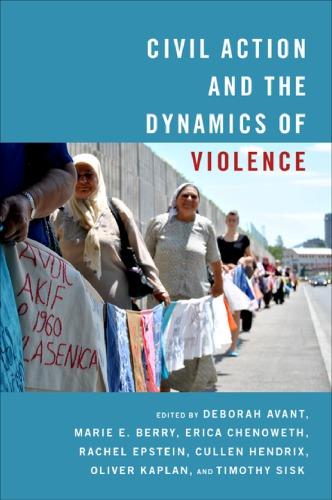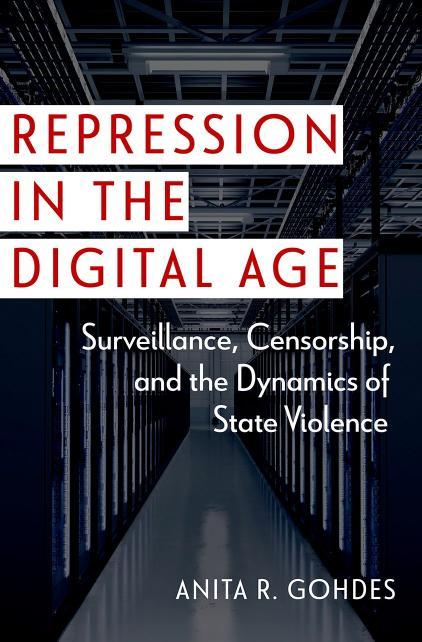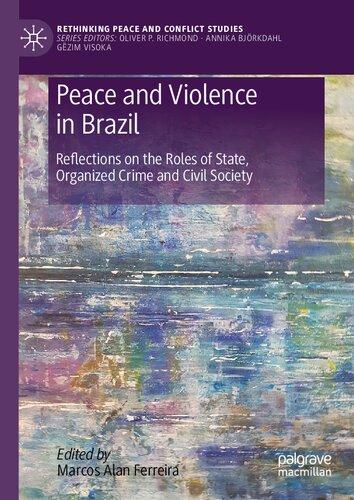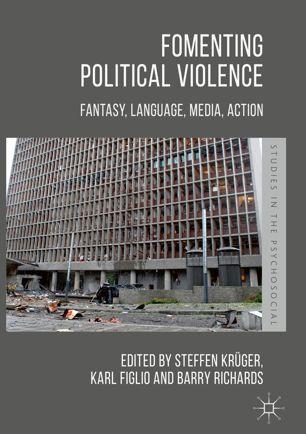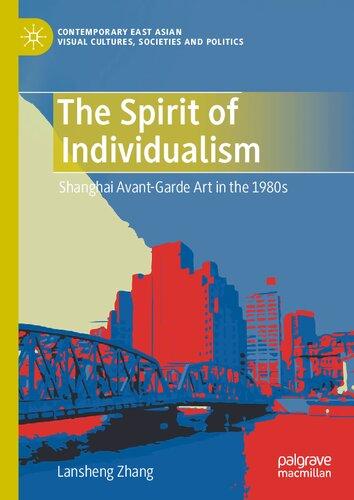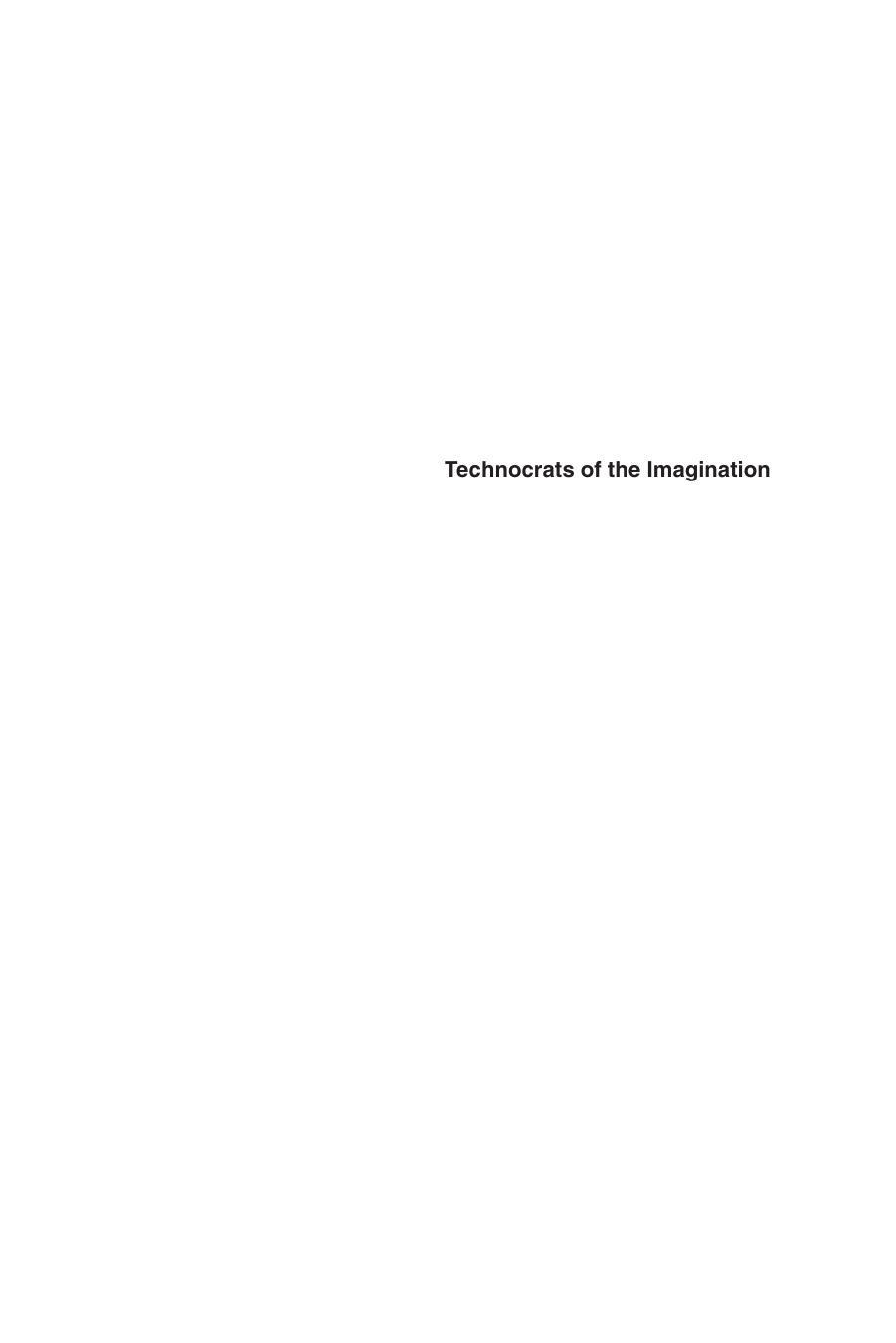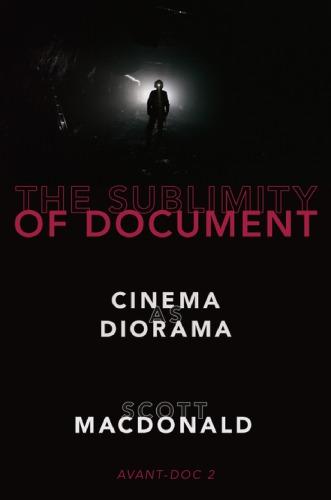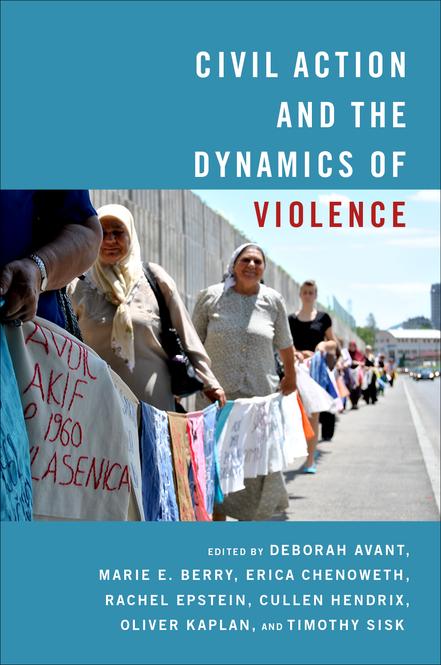1
Oxford University Press is a department of the University of Oxford. It furthers the University’s objective of excellence in research, scholarship, and education by publishing worldwide. Oxford is a registered trade mark of Oxford University Press in the UK and certain other countries.
Published in the United States of America by Oxford University Press 198 Madison Avenue, New York, NY 10016, United States of America.
© Oxford University Press 2019
All rights reserved. No part of this publication may be reproduced, stored in a retrieval system, or transmitted, in any form or by any means, without the prior permission in writing of Oxford University Press, or as expressly permitted by law, by license, or under terms agreed with the appropriate reproduction rights organization. Inquiries concerning reproduction outside the scope of the above should be sent to the Rights Department, Oxford University Press, at the address above.
You must not circulate this work in any other form and you must impose this same condition on any acquirer.
CIP data is on file at the Library of Congress
ISBN 978–0–19–005690–2 (pbk.)
ISBN 978–0–19–005689–6 (hbk.)
1 3 5 7 9 8 6 4 2
Paperback printed by WebCom, Inc., Canada Hardback printed by Bridgeport National Bindery, Inc., United States of America
CONTENTS
Acknowledgments vii
List of Contributors ix
1. Introduction: Civil Action and the Dynamics of Violence in Conflicts 1
Deborah Avant, Marie E. Berry, Erica Chenoweth, Rachel Epstein, Cullen Hendrix, Oliver Kaplan, and Timothy Sisk
PART I CIVIL ACTION AND MAINTAINING RELATIONSHIPS
2. Civil Action in the Syrian Conflict 35
Wendy Pearlman
3. Staging Peace: Community Organizations, Theatrical Performance, and Violent Conflict in Peru 64
Steven T. Zech
4. Northern Kenya: Civil and Uncivil Action under Conditions of State Fragility 89
Fletcher D. Cox
PART II CIVIL ACTION AND LEVELS OF LOCAL VIOLENCE
5. The Impact of Civil Action on Levels of Violence: Comparing Two Communities during Northern Ireland’s Troubles 123
Amy E. Grubb
6. Doing Business amid Criminal Violence: Companies and Civil Action in Mexico 147
Sandra Ley and Magdalena Guzmán
7. Civil Action and the Microdynamics of Violence during the Bosnian War 178
Marie E. Berry
8. Nonviolent Communal Strategies in Insurgencies Case Study on Afghanistan 203
Christoph Zürcher
PART III CIVIL ACTION AND THE RESOLUTION OF VIOLENT CONFLICT
9. Civil Action against ETA Terrorism in Basque Country 229
Javier Argomaniz
10. The Colombian Private Sector in Colombia’s Transition to Peace 255
Angelika Rettberg
11. Conclusion 279
Deborah Avant, Erica Chenoweth, Rachel Epstein, and Cullen Hendrix
Index 297
ACKNOWLEDGMENTS
In 2009, John and Anna Sie endowed the Sié Chéou-Kang Chair and Center for International Security and Diplomacy at the University of Denver’s Josef Korbel School of International Studies. It is in the Sié Center that we all began to interact regularly and realize our intersecting interest on how nonviolent action by nonstate actors affects conflict. So our first thanks go to the Sie family for the opportunity their gift provided.
The questions that drove this research were not born from theoretical puzzles within academic debates, but from each of us seeing, on the ground, the impact of these different authorities and their action. We saw patterns that encompassed civil resistance, but went far beyond civil resistance alone. Our observations led us to look for a broader conception with which we could describe and understand these impacts. Generous support from the Carnegie Corporation of New York Program on Peace and Security’s Rigor and Relevance Initiative allowed this project to grow and encouraged us to explicitly embrace our engagement with these different authorities as members of policy communities. We are particularly grateful for Stephen del Rosso’s stewardship of this initiative and efforts to link the growing group of academics concerned with bridging the gap between that academic and policy worlds.
As we designed our processes of investigation to encourage interaction with practitioners, rather than seeking to convince them, after the fact, of what our research could tell them, we sought to better understand what they experienced in practice so as to foster better questions and more pertinent concept development. We gained many insights from this process, including our attention to exclusionary practices even when they were not overtly violent and our disaggregated conception of how civil action can shape the dynamics of violence (through relationships as well as levels of local violence and the overall trajectory of the conflict). This coproduction of knowledge from different vantage points
made this project what it is, and is an important model for engaged scholarship that we hope others will adopt.
Among the many activities the Carnegie support allowed was a post-doc program and our first cohort of post-docs: Cassy Dorff, Devin Finn, and Steve Zech played an important role in pushing the project forward. We also benefited from conversations with those who received our Engaged Scholar Awards during the grant period: Wendy Pearlman, Christian Davenport, Robert Gallucci, Samuel Popkin, Sarah Sewall, Daniel Drezner, Martha Finnemore, and Mary King.
We held two conferences to develop and then hone our concepts and cases. We are grateful to the following participants: Consuelo Amat, Javier Argomaniz, David Atkins, Howard Barrell, Tanja Borzel, Robert Braun, Hollie Nyseth Brehm, Jo-Marie Burt, Susanna Campbell Allison Coppel, Fletcher Cox, Cassy Dorff, Tamra Pearson d’Estree, Devin Finn, Ellen Furnari, Janice Gallagher, Scott Gates, Natasha Greenberg, Amy E. Grubb, Lindsey Heger, Jill Hereau, Joseph Hewitt, Matthais Hofferberth, Sarah Holewinski, Danielle Jablanski, Bruce Jones, Michael Kalin, Sabrina Karim, Marla Keenan, Peter Krause, Sandra ley, Jason Lyall, Erin Mazursky, Althea Middleton-Detzner, Hardy Merriman, Will Moore, Amanda Murdie, Manel Omar, Evan Perkoski Angelika Rettberg, Thomas Risse, Candace Rondeaux, Michael Rubin, Kurt Schock, Conor Seyle, Maria Stephen, Carla Suarez, Isaac Stone Fish Emmanuel Teitelbaum, Linda Tropp, Jodi Vittori, Stephen Wittels Reed Wood, Steve Zech, and Christoph Zürcher. The open engagement among our editors and case-study authors made this project both fruitful and fun.
We also benefited from presentations in the political science departments at Stanford and University of Maryland. Special thanks to Sean Rao, Virginia Haufler, Paul Huth, David Cunningham, and Susanna Campbell for their helpful comments. We want to give special recognition to Will Moore, who provided his characteristic good humor and excellent comments at our final conference; we only wish he were here to see the result.
Finally, we thank our faculty, staff, and student colleagues at the Josef Korbel School and the University of Denver’s leadership for their ongoing interest and support and are particularly grateful to the Sié Center staff: Jill Hereau, Liz McKinney, Danielle Jablanski, and Kate Morgan.
LIST OF CONTRIBUTORS
Javier Argomaniz, University of St. Andrews
Deborah Avant, University of Denver
Marie E. Berry, University of Denver
Erica Chenoweth, Harvard University
Fletcher D. Cox, William Jewell College
Rachel Epstein, University of Denver
Amy E. Grubb, Department of Security Studies & International Affairs, Embry-Riddle Aeronautical University
Magdalena Guzmán, Vía Educación
Cullen Hendrix, University of Denver
Oliver Kaplan, University of Denver
Sandra Ley, Centro de Investigación y Docencia Económicas (CIDE)
Wendy Pearlman, Northwestern University
Angelika Rettberg, Universidad de los Andes
Timothy Sisk, University of Denver
Steven T. Zech, Monash University
Christoph Zürcher, University of Ottawa
Introduction
Civil Action and the Dynamics of Violence in Conflicts
Deborah Avant, Marie E. Berry, Erica Chenoweth, Rachel Epstein, Cullen Hendrix, Oliver Kaplan, and Timothy Sisk
1.1. Introduction
The Second Liberian Civil War (1999–2003) ended not on the battlefield but in meeting rooms and peaceful demonstrations. Tired of the seemingly intractable violence, a network of women’s groups coalesced under the Women in Peace Network (WIPNET) banner to try to bring an end to it. The women organized a Lysistrata-inspired sex strike, which received a great deal of international media attention.1 But they also lobbied Liberian president Charles Taylor directly to attend peace talks with Liberians United for Reconciliation and Democracy and the Movement for Democracy in Liberia and, once the talks were under way, created a human barrier to prevent negotiators from leaving the table before a deal could be concluded. Two leaders of the movement—Ellen Johnson Sirleaf and Leymah Gbowee—received the 2011 Nobel Peace Prize in recognition of their efforts.
The story of WIPNET provides a striking example of how a civil society group taking civil action can dampen violence. And this example is not unique. In Colombia, community-based organizations, including local NGOs, unions, and faith groups, negotiated with government forces, rebels, and paramilitaries to reduce violence in their communities during the war (Kaplan 2017). Firms in Colombia committed to best practices, such as the Voluntary Principles on Business and Human Rights, and spent money and effort to push for peace (Rettberg 2009). A nonviolent protest movement in Ukraine led former president Viktor F. Yanukovych to flee.2 After that, small pockets of nonviolent activism continued to confront violence, at times successfully. For instance, in spring 2014 in the city of Mariupol, steel workers from the company Metinvest
joined with community activists and local police to patrol the city, remove barricades, and restore order.3 These are not isolated incidents in the context of a few conflict-affected settings. Indeed, from the Bosnian War (1992–1995) to Mexico’s ongoing drug-related violence, we find examples of civil action nonviolent strategies that promote deeper engagement with stakeholders—that often improve the prospects for peace.
This volume constructs a logic of civil action. We conceptualize “civil action” as behavior characterized by (a) a reluctance to engage in violence and (b) a willingness to abide by a minimal level of respect to maximize engagement with others.4 We and our contributing authors argue that civil action often makes it harder to activate the relational processes that generate violence, even though it can involve civil disobedience and mass noncooperation and other disruptive acts, as well as explicit efforts to reduce or prevent violence. Civil action can be undertaken by a wide range of social actors, driven by different bases of authority. Although civil action sometimes escalates violence, it often has violencedampening effects. This volume highlights the crucial and often-neglected role that civil action has played in deciding the fates of conflicts around the world.
Below, we elaborate on the logic of civil action and demonstrate its intersection with analyses of microdynamics and contentious politics. We then examine who takes civil action and the authority claims and capabilities that affect this potential. Next, we then explore three ways in which civil action might matter for conflict dynamics: through its effect on relationships, on levels of local violence, and on the overall conflict. We elaborate on how civil action matters— through process and relationships—and when it should be most likely to work. Finally, we provide an outline of the remainder of the book.
1.2. What Is “Civil” about Civil Action?
Our concept of civil action builds on civil resistance and the notions of civility on which it is based. The vast literature on civil resistance has largely equated “civil” with “nonviolent.” It examines action that seeks political change and is thus explicitly contentious. Civil resistance is, by definition, transgressive and extra-institutional. Nonetheless, analysts hold that proscribing violence is key to a style of resistance that yields more-beneficial results (Roberts 2009, 2–3; Sharp 2011, 87). Chenoweth and Stephan (2011) demonstrated not only that these campaigns are successful, but how they succeed. Refraining from violence “facilitates the active participation of many more people than violent campaigns, thereby broadening the base of resistance and raising the costs to opponents of maintaining the status quo” (10–11). The number and diversity of participants enlarges the strategies for resistance. It also makes it more likely that government
repression will backfire. Even erstwhile supporters of the status quo are often uncomfortable with repression against nonviolent action and are more likely to shift their support to an opposition that is nonviolent. It is this effect on relationships that makes nonviolent movements more likely to achieve their goals. These relational dynamics also increase the likelihood that the resulting changes will be democratic.
Civil action is broader than civil resistance in one way, and somewhat narrower in another. While both civil resistance and civil action are nonviolent, civil resistance typically refers to a form of conflict in which people actively confront oppression using disruptive, transgressive, and extra-institutional methods. Civil action is broader because it also includes less conflictual engagement with various stakeholders—legally or illegally, institutionally or extra-institutionally. Civil action is narrower, though, in that it typically eschews exclusionary action. Methods that opponents find unsettling, insulting, disrespectful, or threatening—such as public shaming and social ostracization—should be tamed through personal connection or recognition in other arenas such that constructive engagement can persist, even in the midst of conflict. Civil action subsumes much of what we count as civil resistance even as it refines what forms of resistance should count as civil action and broadens the ends at which it aims.
Thinking through the broader concept of civil action led us to revisit debates over civility to clarify how we would draw the line between actions that are considered “civil” and those considered “uncivil”—terms that remain contested. In his two-volume series, The Civilizing Process, German sociologist Norbert Elias traced civility to notions courtesy in the Middle Ages. With transitions to modernity that grew into a “more self-conscious molding of personal behavior to conform to norms of appropriateness and to facilitate coordination in increasingly complex urban communities” (Bybee 2016, 9; Elias 1978).
Many scholars take a maximalist view of civility, seeing it as attending to “our better angels,” respecting good manners, and abiding by social norms. By this logic, insult and verbal attacks are evidence of incivility. Scholarship has taken this maximalist view in a Hobbesian direction, urging silence on issues that prompt too much disagreement, or in a Lockean one, aiming tolerance of all civilized beings and building ever larger areas of consensus (Bejan 2017).
Seen this way, though, exhortations for civility can preclude just the sort of civil resistance that leads to social change. Silence on issues of great disagreement can be a tool for the continuation of practices that advantage some over others. Privileging civility can be a mechanism for the elite and powerful to silence opposition and dissent. Indeed, one of the significant critiques of civility is that it can be used to preserve an unfair status quo (Bybee 2016).
Instead, we build on what Teresa Bejan (2017) calls “mere civility.” The “mere” to which she refers appeals both to a minimal image of restraint and
an image that separates two spheres in which people can bond— over mundane interactions or over commitments to broader social purpose. Drawing on the writings and life of Roger Williams, Bejan (2017) explains that “mere civility” eschews violence (is peaceable), respects some (any) social graces, and is restrained based on something that is shared, a “bond of civility” (57–61). The minimal restraint it entails is crucially separate from the values over which people can, and do, legitimately disagree (60–61). In William’s writing, these values were religious, but we extend them here to any values that pertain to broad social purpose. Thus mere civility does not require agreement or consensus and does not entail avoiding conversation about issues on which people vehemently disagree.
Mere civility is distinguished from more robust ideas of civility because it places value on the human connections that can be established in even ordinary interactions and continued dialogue between perspectives. Unlike the dominant Hobbesian or Lockean schools that either restrict what is said or require some level of agreement on which to base interactions, mere civility requires only peaceable actions that are respectful enough of basic human decency to keep a conversation going (Bejan 2017, 164). Instead of discouraging discourse, it encourages open conversation even among those who neither respect nor agree with one another. Bejan (2017) shows how this conception of civility is inclusive—radically so. It led Williams to call for, and implement, a much more open vision of who was part of society—“one that included American ‘Barbarians’ and Catholic ‘Antichristians’ alike” (65).5 Williams founded the Rhode Island settlement on these terms. As Bejan explains, what drove William to this notion of mere civility was his strident proselytizing and the logic through which he thought it would most likely be successful (50–81).
The conception of civil action we put forth, then, refers to behavior that is animated by (a) reluctance to engage in violence and (b) willingness to abide by a minimal level of respect in order to continue engagement with others. It includes, but does not end with, civil resistance. It may be contentious, conciliatory, or cooperative. It can be undertaken by a wide range of social actors, driven by different motives and bases of authority. To be considered civil, however, action must resist violence and curtail interactions that exclude others.
1.3. Civil Action, Microdynamics, and Contentious Politics
Traditional analyses of war and civil war often assume that there is unity among “protagonists” and focus on their overarching, or macro narratives. One of the important insights from microstudies on violence, though, is that not all citizen
actions are motivated by a macronarrative and not all violence stems from one. Stathis Kalyvas (2006) shows how in civil war, action motivated by personal or small-group concerns often feeds violent dynamics. Violence not only can, but often does, escalate inadvertently because violent episodes provide openings that ordinary people, alone or as part of a group, take advantage of to enrich themselves or settle scores in ways that lead to more violence.
While studies on microdynamics have uncovered how actions unrelated to overarching policy matter for violence, they tend to see ordinary civilians as either opportunistic perpetrators or as victims (Kalyvas 2006; Weinstein 2006). They have rarely focused on the ways citizens and groups use their agency to de-escalate or reduce violence.6 But the empirical record reveals that citizens and groups do this all the time. A local business consortium in Kenya worked to dampen violence during the 2013 elections (Owuor and Wiser 2014). Community groups worked to reduce the impact of Colombia’s civil war on their neighborhoods (Kaplan 2017). And even during the Rwandan genocide, individual Hutu engaged in transactions to desist from killing Tutsi (Luft 2015). The uncivil and violent activity Kalyvas and others document often works alongside civil action, and the two can play off each other.
The relational insights offered by contentious politics scholars offer one path toward whether and how violence unfolds. The contentious politics literature has long noted overlap in the general relational qualities that accompany political violence. The exclusivity, polarization, radicalization, and evocation of enmity that are activated in wars between states also accompany civil or intrastate wars (Esteban and Schneider 2008) and political violence more generally (Tilly 2003). Scholars have recently begun to draw this relational logic into the security studies field (Avant and Westerwinter 2016; Goddard and Nexon 2016).
Much of the contentious politics literature focuses on uncivil action and its impact on violence. Exclusivity and polarization engender violence by othering, leading to what sociologists call social “closure” (Barth 1969; Burt 2005; Tilly 2006). Othering denotes who is outside the circle and, at the most extreme, who is the enemy. The process of social closure often reduces individuals with many different social identities and roles to only one. Closure then keeps the other out by choking off new information and options for action. Studies of war are also littered with this logic of enmity (Clausewitz 1989; Howard 1970). Related work in political science, sociology, and social psychology demonstrate that these general “uncivil” relational processes accompany violence in a variety of settings (see, for example, Schmitt 1996; Tilly 2003; Staub 1996). Generally, the contentious politics literature focuses on the logic of the process—but the violent process. The related work focuses less on the process than on the structural variables that make it likely.
We see civil action as something that often makes it harder to activate the relational processes that generate violence. Building out the logic focused on processes that lead away from violence reveals many possibilities. Resisting closure by maintaining a more complex view of others increases the potential for identification with the different social roles or identities any given individual might occupy (Varshney 2001). Respecting those with whom one disagrees, even on mundane matters, opens the potential for listening to them, as Kupchan’s (2010) analysis in How Enemies Become Friends demonstrates. Listening can lead to changes in framing that benefit all sides—as Javier Argomaniz (chapter 9) documents in his analysis of the peace movement’s separation of pro-Basque from pro-violence. Listening can also build relationships. The mundane bonds people develop in day-to-day life or over efforts to provide public goods can temper their reactions to disagreements they have over values, as we have seen in the growing literature on rebel rule (Arjon, Kaspir, and Mampilly 2015). And maintaining even a small amount of openness in relationships allows new information to flow in ways that may limit the spread of extreme claims in support of opportunistic action, as Solingen has demonstrated in looking at the relative proliferation and war-prone activities of more open and more closed governments (Solingen 2007a, 2007b). The same openness that limits the spread of extreme claims can help build greater understanding between parties. Interaction with others on everyday issues can engender identification that reduces violence against others. Serious examination of civil action in particular settings may help reveal more ways through which violence can be forestalled than the conventional wisdom currently accepts. We hope our analysis is seen as a response to analysts’ calls for greater attention to a more varied set of processes through which peace can be built (Muggah and Krause 2009; Paffenholz 2010).
Investigating civil action, how it is undertaken by various social actors, and how it shapes conflict trajectories in particular circumstances is this volume’s task. Through this exploration, we aim to demonstrate the value of a larger research agenda taking into account both civil and uncivil action.
1.4. Who Undertakes Civil Action and Why?
Civil action is defined by behavior rather than the characteristics of different people or groups. Thus all people have some capacity for civil action. Here, we focus on civil action undertaken on behalf of different common social identities. Our analysis builds on several streams of research that highlight the effects of nonstate actors on conflict dynamics. In theorizing what civil action a particular group might take and why, we focus on the logic of authority behind particular social identities (or types of actors) and their relative capacities.
We define authority as the ability to induce deference in others (Avant, Finnemore, and Sell 2010; Barnett and Finnemore 2004; see also Raz 1990). Different social identities induce deference in different ways, which constrains what actors can do when acting in this role. Authority-claims provide insights into the meanings or collective purpose that charge an authority’s relations— why followers pay attention to the authority in the first place. For instance, a church might induce deference among its followers through its commitment to religious doctrine. It might also induce deference from a broader community by virtue of its ability to represent its followers’ views or perform good works for that community. These various bases of authority animate action. They help actors justify engaging in civil (or uncivil) action and thus shape the sorts of action they can take.
We define capacities as the relational and other resources a group can tap into to generate effect. These include levels of organization, relational ties with which to spread information and generate a following, and material resources. A church, for example, is organized to perform services, collect contributions, and do other works in the community. It also has access to resources through donations. A church’s relationships with worshipers and others in the community can increase its capacity to act, and its ties to national or transnational churches of the same ilk can generate resources and draw attention to its actions. A group’s relational ties and other capacities shape its ability to take action.
The most obvious authority that might undertake civil action is the government. Max Weber (Gerth and Mills 1946, 77–78) defined the state as “a human community that (successfully) claims the monopoly of the legitimate use of physical force within a given territory.” As many others have pointed out, states often legitimate that monopoly by providing public goods (North 1986) or claiming to represent the public interest. They also often claim to limit when and how agents of the state, including police and military personnel, use physical force (Loader and Walker 2007). But other local authorities of all sorts can also take civil action. These include community organizations, NGOs, churches and religious leaders, businesses, journalists and artists, and even elders or other traditional authorities. These vary in their claims to authority and in their capacities.
Transnational authorities may also engage in civil action. Transnational networks can connect local organizations with advocates in international nongovernmental organizations (Keck and Sikkink 1998). Transnational corporations may have stakes in particular conflicts through their investments or supply chains. Finally, international or intergovernmental organizations (IOs) gain authority via delegation by governments or a broader community of governments (the international community), and they often have a commitment to peace and security that can inform civil action.
In what follows, we offer some initial thoughts on the authority and capacity these local and transnational social identities can draw from to undertake civil action, and we highlight examples of actions that have been taken in conflictaffected areas. Though our focus is on civil action, there are also logics by which each can also undertake uncivil action.
1.4.1. Governments
Weber’s oft-cited definition of a state ties a state’s claim to a monopoly on violence to its legitimacy, which we take to be a commitment to marshal violence for purposes that are widely accepted among a population. In the best of circumstances, citizens widely defer to the government, and its actual use of violence is restrained; the government offers its citizens various resources—such as a legal system—that allows for the nonviolent resolution of conflict and protects them from violence. In the midst of conflict, though, parts of governments can become tools for uncivil action. During the Troubles in Northern Ireland, for instance, the police in the town of Dungannon allied with the loyalists—against government policy and law. This increased the capacity for loyalist violence, and when they were seen as taking partisan action, reduced the trust of Catholics in the police and enhanced the Irish Republican Army’s ability to recruit new members (Grubb 2016 and chapter 5, this volume).
Governments often have significant capacity, by virtue of their resources and organization, to shape collective behavior. The police in Northern Ireland, for example, have budgets, equipment, standard operating procedures, and institutional authority. In the midst of conflict, these capacities may be diminished (if the tax base goes down, for instance, or offices are attacked) or increased (if the public rallies, outside groups lend support, or governments begin raising more revenue to address threats).
1.4.2. Movements and Local Civilian Groups
Studies on the microdynamics of violence focus on civilians as individuals who either take advantage of, get roped into, or become victims of violence (Kalyvas 2006; Valentino 2004). But civilians can also organize collectively. The most obvious work on collective organization focuses on civilians as part of movements. Groups advocating political change are generally committed to achieving some broader social good. Resistance movements generate authority through both this commitment to change and the quality of their behavior. The appeal to civil action can help to draw larger numbers of participants to the group and, in some circumstances, encourage a shift in loyalty among regime supporters. In
response to state repression or violence, though, some may be tempted to retaliate. And as group solidarity grows, so can efforts to exclude those with different views, as was the case with Viktor Orbán’s Civic Circles Movement in Hungary (Greskovits 2017).
Civilian groups can also explicitly aim to tamp down violence. Kaplan documents this in Colombia, where community organizations stepped in to engage with different armed groups that were operating in their midst and negotiate strategies to reduce the risk to the community (Kaplan 2017). These local groups may mobilize existing institutional authority for this new purpose, as was the case with the Asociación de Trabajadores Campesinos del Carare (Kaplan 2013b). Community groups can also form in direct response to the violence, generating authority as a voice for a particular sort of inclusive community, as Marie Berry (chapter 7) explains happened in Tuzla, Bosnia, during the 1990s conflict there. In the Tuzla case, local leaders with various authority bases—from government to religious to commercial—participated in an umbrella organization committed to maintaining the multiethnic character of the city. Groups can also influence or manage local-justice procedures, such as providing conciliation services, discouraging or sanctioning those who join armed groups, and so on, which can discourage residents from resolving their disputes through armed actors and thereby dampen the potential for cycles of violence (see Garcia Duran 2005; Van Cott 2006). Community groups can name and shame violent actors and use religious and moral commitments to persuade armed groups to reduce their aggressive or violent behavior (as documented by Guerra Curvelo 2004).
Local community groups often have far fewer resources than governments and vary widely in levels of organization. They gain capacity according to the strength and extent of their social ties and the appeal of their mission. Local groups can repurpose quotidian networks to generate more participation, more information, and more connection with other authorities (Parkinson 2013). Local groups can also build capacity through their accomplishments. Small gains can increase participation and overall capacity. A commitment to using civil action to accomplish change can legitimize a group and potentially attract other authorities, to establish a broader and more diverse following.
1.4.3. Local NGOs
Closely related to local community groups are local NGOs (sometimes called community-based organizations, or CBOs). They can either be entirely local or a branch of a national organization. Some generate authority by virtue of their principled commitments to, for instance, furthering human rights, women’s
concerns, or environmental issues; others are professional membership organizations, such as lawyer or teacher associations, and gain additional authority from those who also appreciate the social purpose these professionals provide. Their civil action is often tied to their social purpose. To the extent that the conflict impacts that purpose, they may also be drawn into attempts to tamp down the conflict.
Local NGOs and associations also arise during armed conflicts to address the specific problems the residents of the community are facing, such as Fundación Dario Maya, in Pensilvania, Colombia, or Medica Zenica, in Bosnia. In Syria, the Local Coordination Committees and other national networks emerged to support grass-roots protest efforts as they took shape throughout the country, while the Violations Documentation Center formed to report on human rights abuses by the government and opposition alike (Pearlman, chapter 2). Women’s NGOs often form to protest violence (e.g., Women in Black in Israel/Palestine), demand accountability for the death (or disappearances) of loved ones (Las Madres de la Plaza de Mayo in Argentina), or mobilize for social-psycho care (e.g., Avega Agahozo in Rwanda). Local NGOs may work to serve local needs or may monitor the numbers of civilians killed and wounded by combatant forces and advocate for justice, reparations, or changes in the military strategies of armed actors. They frequently partner with transnational actors to develop methods of systematically tracking civilian harm and to gather evidence of killings and damages. We have seen this evidence-based advocacy take place most recently in Afghanistan and Syria, facilitated by mobile phones and other technological tools (Niland 2011).
Like local community groups, local NGOs gain their greatest resource from their connections. By virtue of their commitments to issues, though, they may also link up with other national and transnational actors that can lend them additional reach and capacity. For instance, in Colombia, the Jesuit think tank Centro de Investigación y Educación Popular interacts with and provides information to Human Rights Watch and other groups. Local groups that do not support transnational action can also counteract its effectiveness, as has been the case in some areas of Afghanistan. NGOs that take successful civil actions related to their missions may also generate greater commitment from others.
1.4.4. Religious Authorities
Researchers have also tied religious institutions and leaders to behavior that both exacerbates and alleviates violent dynamics (Appleby 2000; Sisk 2011; Kaplan 2013a). Religious institutions and leaders gain authority from the commitment to doctrine and from the special role faith plays in shaping many people’s moral
compass. Even nonadherents may defer to a religious leader as someone possessed of moral authority—evident in the broad popularity of the Dali Lama or Pope Francis. The larger religious organization of which individual institutions are a part may also delegate authority to them. And they may gain the deference of both their followers and a broader constituency by virtue of the public service they carry out, such as charity work, social services, and schools. Religious leaders can be driven to undertake civil action in keeping with the teachings of peace and tolerance that are common to many religions. Like Roger Williams in Rhode Island, they may also be drawn to civil action in the hopes of wooing new adherents. They can also, however, be drawn to uncivil action, fomenting exclusion and violence. Berry’s analysis of the Bosnian war in chapter 7 of this volume shows both.
Religious institutions such as mosques, churches, and temples have generally developed significant organizational capacities to serve their communities. Religious leaders are also often connected to others in their faith communities at the national and transnational levels. Their ties to other faith leaders can generate the potential for interfaith dialogues. Finally, they have resources from tithes and may garner additional resources through their many connections to other religious institutions, political actors, or business elites. The combination of their special authority and significant capacities gives religious institutions and leaders noteworthy capacity for civil (and uncivil) action.
1.4.5. Businesses
Businesses generate authority through both purpose and profit, but profitability shapes each of their authority relations. It is when a purpose promises profit that companies grow; without the promise of profit, a company is not likely to sustain itself (Litvin 2004). Local businesses gain authority with consumers for producing goods or services and with employees for providing jobs. Their role in the local economy may also generate some authority among the population at large and within government circles based on expertise, but also on continued profitability. Larger companies may also have shareholders as additional constituents. Businesses do not always push for social change, and often depend on the government to protect their property; however, many are averse to violence that disrupts markets or threatens that property. This can give some businesses leaders both the reason and authority to try to tamp down violence. Indeed, there is some evidence that local companies can conduct “quiet diplomacy” with actors in local conflicts or use their economic influence to lobby for peace agreements. For instance, Wood (2003) attributes the success of the El Salvadoran and South African dissidents in part to significant conflict fatigue
on the part of commercial interests, who then used their economic influence as leverage over those countries’ governments. Individual business leaders can also have particular leanings that lead them to act.
Businesses vary widely in size. Their authority claims are often linked to particular as well as common purposes, but they often have strong levels of organization both at the company level and also sometimes through business groups in their sector (Soule 2009). Many have ties to different levels of government that can generate both resources and potential influence over government actions. Their material resources are generally greater than many movements or NGOs.
1.4.6. Journalists and Artists
Journalist and artists are a category that is left out of much of the work on nonstate actors, but the fact that journalists (and to a lesser degree artists) are often targeted during conflicts should alert us to their potential importance. Journalists gain authority by virtue of their access to and reporting of information; artists of all sorts gain it from their ability to move people aesthetically or emotionally and by reflecting the culture and history of groups under attack. Both are frequent features of conflict—journalists reporting it and artists depicting it in ways that interpret its cost and meaning (or lack thereof). As the fourth estate, the political importance of journalism and journalists is widely recognized (Schultz 1998), and the so-called CNN effect is said to shape the issues we attend to and the frames through which we see them (Robinson 2002; Harcup 2014). Art, too, has played a multitude of roles in conflict throughout history (Brandon 2007). Journalists are charged with sensationalizing conflict in ways that may exacerbate social closure and othering, but they can also bring truth to bear in ways that humanize the other or report on the atrocities being committed on all sides in ways that call the violence into question. Artists play a unique role because their expression is not seen as fact. They may have more leeway to interpret conflict in ways that lead people to reflect critically on their assumptions. Of course, artists and journalists can also take uncivil action and become tools for propaganda.
The resources of both artists and journalists depend on the networks of which they are a part. Moving stories or artworks, however, can rapidly increase the size of a network. For instance, Steven Zech (chapter 3) demonstrates how staging moving performances that took on the violence on both sides of Peru’s civil war elevated the profile of the Vichama theater group, and then violence against one of its champions propelled it much further. Pearlman (chapter 2) adds that free expression and citizen journalism are particularly important forms of civil action against regimes that make censorship and control of information a primary pillar of authoritarian rule.
1.4.7. Traditional Authorities
Traditional authorities gain their authority through the customary legacy they embody. Their claim to represent a people and provide some benefit to them is often made both in the community and with some outside authority. The benefits they provide may include services, such as mediating disputes or, in some cases, the capacity to wield violence. The overlap between quotidian ties, claims to a people, and history often give traditional authorities deep influence over their populations. They tend to be more relevant in areas where a modern national government is less present. But they frequently have ties to the central government, or even to its local representatives. Indeed, governments sometimes delegate authority over specific matters to these leaders. Although traditional authorities can include tribal elders or chiefs who play integral roles in fostering stability and development, they can also include those more likely to use violence, often termed “warlords,” who can engage in uncivil action to undermine stability and augment violence. Scholars have acknowledged that traditional authorities can undertake what we would call civil action to generate benefits to themselves or their people under particular circumstances (Ahram and King 2012; Marten 2012; Wahtchekon 2004).
The wealth and the levels of formal organization among traditional authorities vary widely. Their quotidian ties are generally strong, however, and their greatest resource is their ability to interface between their legacy and internal patronage system and the outside authority; they are arbitrageurs (Ahram and King 2012) or brokers (Marten 2012). Where traditional authorities are relevant, they exert an important pull on their populations and efforts at civil action without their blessing are likely to yield limited effect.
1.4.8. Transnational NGOs
Transnational NGOs can be categorized according to their focus on advocacy or implementation (Murdie 2014). Advocacy groups gain authority and resources from their commitment to principles. Implementing NGOs gain authority and resources from their commitment to a mission, but also from their capacities to deliver services. Advocacy organizations are often committed to political change; they undertake mobilization to prescribe proper behavior and to “name and shame” offending parties (Hendrix and Wong 2014). Implementing NGOs often provide humanitarian relief, environmental protection, or development in the midst of conflict. They tend to be more willing to get along with rebels or other conflict actors, maintaining neutrality to gain access to populations and reduce the potential that the work they do will incite violence against them. Their
commitments to their mission and to service provide ample justification for civil action.
International NGOs often have greater access to material resources than their local counterparts do. They are likely to have highly developed organizational capacities, though these vary and may be stronger among implementing organizations than advocacy organizations. They frequently have stronger connections than local NGOs do, though, with governments outside a conflict zone and with international organizations—from whom they may also receive contracts and resources (Cooley and Ron 2002). They vary widely in their connections with local NGOs, religious organizations, businesses, civilian groups or local government officials, but these ties are generally less well developed.
1.4.9. Transnational Corporations
Transnational corporations (TNCs), like local companies, are concerned with profitability. They gain authority from a similar array of constituencies as local firms, though expertise is often more important, shareholders often play a larger role, and government officials from their home countries add an additional constituency. Like local companies, TNCs rarely push for political change (indeed, they often lobby against it), and they frequently rely on the government for protection. Like local companies, they are generally averse to violence (Alt et al. 1996). Mining, oil, or other extractive companies are committed to their operations and their property, however, in ways that regularly lead them to try to continue working in amid conflict zones (Alt et al. 1996). Their resources and linkages have frequently led transnational NGOs to assign authority to them for their complicity in violence (Haufler 2010; Mirshak 2010). This, in turn, has sometimes led transnational corporations to civil action. Traditional analyses have examined how transnational companies sometimes lobby their home governments to pressure foreign governments to pursue peace agreements (Keck and Sikkink 1998). It has become increasingly common, however, for TNCs to participate more directly. This can mean using economic rewards to encourage peaceful behavior or demobilization, appointing ombudspersons to develop community dispute-resolution mechanisms and address localized grievances involving the company, or providing social services and infrastructure (healthcare, electricity, etc.) to compensate the community and reduce the negative perception of the company (Bebbington, Bornschlegl, and Johnson 2013). In some cases, companies have participated in multi-stakeholder initiatives or standards to encourage nonviolent behavior by others and to guard against the potential that their actions will spark conflict. The Kimberly Process, Extractives Industry Transparency Initiative, the Voluntary Principles, and similar efforts
aim to reduce violence by establishing systems that allow or encourage business activity without feeding into corruption or violence (Nelson 2000; Banfield, Haufler, and Lilly 2005).
TNCs have significant material resources and strong organizational capacity. They also have strong connections to national and international governments. They may have more conflictual relationships with local and transnational NGOs and variable relations with local communities. As with transnational NGOs, these local ties are quite variable.
1.4.10. International Organizations
International organizations (IOs) gain authority via delegation from states but also through their missions, many of which are tied to promoting peace. Since the United Nation’s landmark “Agenda for Peace,” in 1992, IOs have directed more attention to intrastate conflict (Peon 2002). They have focused on prevention; negotiation; securing peace agreements; peacebuilding; and assisting local institutions to make them more legitimate, inclusive, and capable (Walter and Snyder 1999; Doyle and Sambanis 2006; Sisk 2013). IOs do not always eschew violence. The United Nations has a long history, dating to the Congo Crisis of the early 1960s, of “peace enforcement” or “robust peacekeeping,” and NATO has often taken bellicose actions. IOs also take civil action, though, including mediation, monitoring (including security guarantees), norm promotion, and institution building.
IOs also have significant material resources and strong organizational structures. Their strongest ties are to governments, but they also often have ties to the transnational NGO community and transnational companies. As with the other transnational actors, their local ties and understandings can be more tenuous (see Autesserre 2014; Campbell 2017).
1.5. What Effects Should We Attend To?
The case studies presented in this book examine the actions authorities have taken and their justifications for doing so during periods of armed conflict. Some of the case studies also offer explanations for why particular groups or authorities undertake civil action or uncivil action, but our primary focus is on the effects that civil action produces.
As the discussion thus far suggests, we anticipate that civil action often dampens the potential for violence. But its effects are not always peace promoting. For example, when the Rwandan Armed Forces (Forces Armées Rwandaises, or
FAR) were defeated by the Rwandan Patriotic Front following the 1994 genocide, the majority Hutu government, along with its forces and Hutu refugees, fled into the border areas, creating a public health disaster. Humanitarian NGOs, including CARE and Medicines Sans Frontiers, engaged nonviolently to set up camps to support the desperate population. But the camps also provided shelter and support to the government and to FAR. The FAR forces then used violence to consolidate their control over the refugees in the camps and remobilized to attack the new government in Rwanda. An estimated 4,000 died as a result of the violence. The remobilization eventually led the new Rwandan president, Paul Kagame, to attack the camps, in 1996 (Terry 2002). This example, juxtaposed with the civil action the group undertook in Liberia, highlights the Janus-faced impact civil action can have and heightens the importance of understanding its logic and tracing its various effects.
The relational perspective that informs this project directs our attention to a multilevel analysis of effects that may indicate movement away from (or toward) social processes that are known to produce violence. This should include the macro indicators of conflict resolution that are often a part of conventional analyses, such as peace agreements or reductions in overall yearly violence. It should also direct our attention to the variation in violence levels in different locales in conflict-affected states, as has become common among those whose work focuses on the micro processes of conflict. Finally, at the most microlevel, we should also attend to how civil action affects the maintenance (or building) of the trusting relationships on which the open systems of governance and order that minimize overall prospects for violence depend.
Let us unpack these effects in reverse order. At its most basic level, civil action can preserve or enhance the space for human interactions that maintain relationships. Relationships are the critical social fabric on which collective action and governance are built. During the siege in Sarajevo between 1992 and 1995, for instance, women would put on lipstick, style their hair, and walk to work each day as if they were living in a normal city. Artists used satire to lampoon the war and those who engaged in it—putting on a “Miss Besieged Sarajevo 93” beauty contest and performing the musical Hair as a deliberate and radical rejection of the fighting (see Berry, chapter 7). This did not end the siege, but it may have weakened the recruiting efforts by the radical parties who were championing the war. Moreover, these forms of creativity and resistance helped maintain relationships and energize a collective spirit that was critical to governance during the crisis. These relationships were also central to rebuilding order after the siege was over.
In a more heartbreaking example, the White Helmets in Syria, considered for a Nobel Peace Prize in 2016, have saved tens of thousands of lives by rushing to the scenes of bombings to rescue those trapped under collapsed buildings
(Pearlman, chapter 2). These efforts to carve out space for human interaction had obvious personal impact in the lives of those involved. But such efforts can also be important for maintaining—and, in some cases, strengthening—the social fabric that is necessary for governance, either during the war or after its conclusion. In many of even the most difficult cases, including Syria, civil action enables these relationships to develop.
Civil action may also reduce the likelihood of violence in particular spaces. As Séverine Autesserre has reported, despite widespread violence in other parts of the Democratic Republic of Congo, the island of Idjwi remains peaceful. Activity we would categorize as civil action by a network of grass-roots groups—women’s groups, youth groups, religious groups, and traditional institutions—works to head off violent mobilization in Idjwi (Autesserre 2016). Similarly, civil action can tamp down violence after it has emerged, as it arguably has in Mariupol, Ukraine. Tamping down local violence is important in its own right, particularly for those living in more peaceful areas, but because violence in one locale is often used to justify violent responses in another, dampening violence in one place can also reduce the intensity of the overall conflict. Many of our cases— including Mexico, Afghanistan, Northern Ireland, and even Bosnia—offer evidence linking civil action to declining levels of local violence.
Along with the general literature, we are also interested in whether or not a war ends. We look for links between civil action and the ultimate resolution of a conflict. The settlement of the Liberia Civil War we mentioned at the beginning of the chapter is one example. The “sex strike” was only a small part of this; overall, a variety of civil actions undertaken by the movement played a critical role in the steps that led to the Accra Comprehensive Peace Agreement (Gberie 2005). Evidence from two of the cases, Colombia (Rettberg, chapter 10) and the Basque Country in Spain (Argomaniz, chapter 9), also links civil action to processes that contributed to the resolution of the conflict.
1.6. How Civil Action Matters: Processes and Relationships
Like civil resistance, civil action should work through its effect on relationships. Avoiding violence—peaceable behavior—is key. Violence often results from efforts to achieve something without earning it according to established social rules (Gould 2003). It frequently works to undermine established collective purpose. Even violence by government forces often reveals failures or injustices in governance processes or attempts to use the authority of government to benefit few rather than many. Violence is often justified with an appeal to enmity, closing off the potential to interact with the other as criminal or enemy. This
closure chokes information flow and arouses suspicion around those with ties to the other.7 If social capital in a group is gained by reproducing biases instead of by assessing the consistency or accuracy of information, it amplifies bias and encourages the “othering” that is key to polarization. As we discussed earlier, this situation also allows for opportunism.
When individuals can kill to grab land for themselves in the name of collective purpose, it can spur retribution and spark a spiral in which violence begets violence (Kalyvas 2000). Although a collective intensity of purpose can spike during violence, the results rarely generate collective benefits and often lead to regret (Hedges 2002). Violence is not only destructive to life and property; it also leaves those it spares socially damaged, reducing openness, allowing solidarity to be exclusive and prone to opportunism, and restricting new connections. The wounds are lasting.
Civil action’s nonviolent and minimally respectful behavior (either in ordinary daily existence, such as toward those one shares a Friday market with, or based on shared concern about important social issues, such as the commitment to democracy) can help build more open solidarity. Although much civil action work focuses shared social purpose, shared daily experiences can bring people together around an experience— such as wanting to keep the market open. The solidarity that is generated by working to keep the market open can generate conversations about different approaches to social issues—and the reverse.
Respectful behavior generates a predisposition toward inclusiveness. Recognizing someone as worthy of respect, even in a nominal way, is often puts a break on polarization. Staying open to connecting with others and encouraging information to flow, even among those who see situations differently, allows for new interpretations of social situations. Openness to connections and to information are key mechanisms for resisting the poison closure process that Burt (2005) and others have warned against.
The “mere civility” on which our concept of civil action relies requires neither a censoring of disagreement nor placing restrictions on resistance to injustice, repression, or violence. Indeed, disagreement, resistance to wrongs, and conversations about them are key to resisting complicity in violence or injustice. Its focus on decorum and respect as tools to encourage conversations also has critical importance for relational dynamics. These parameters for action foster connections, solidarity among connections, and openness among connections. Its reticence to violence is fundamental to each. Through these mechanisms, civil action is more likely to maintain or build relationships upon which an effective and just governance can be built—those that are most likely to maximize voice in keeping with a collective purpose and thus productive in generating a resilient approach to common affairs (Hirschman 1970).
Connections. Connections are fundamental to collective action. More people participating in a more meaningful way is key to successful civil resistance (Chenoweth and Stephan 2011, 30). The reason civil resistance works better than its violent alternative is that it is more likely to attract large numbers of participants across a broad spectrum of society. In South Africa and El Salvador widespread participation was key to changing governmental behavior (Wood 2000). Corporate elites at Nestle and Shell (Friedman 2006, 50) and military elites in Yemen (Brooks 2013; Nepstad 2013) also shifted their perspectives and behavior as a result of large movements. And new norms often reach tipping points once they are held by a large enough group, at which they have cascading effects (Finnemore and Sikkink 1998). Thus far in studied history, if enough people participate in a movement, it is successful—the so-called 3.5 percent rule (Chenoweth 2013). Successful movements often turn societal authorities away from a regime, leaving them either agnostic toward or supportive of the movement. This dynamic is associated with civil resistance campaigns that are both successful and result in more democratic processes.
Solidarity. For connections to gain meaning there must be a collective logic to them—some agreement or solidarity within a group around a purpose. Our conception that civil action encourages articulation and voice around moral and ethical commitments, or purpose, is critical to developing solidarity. Building solidarity requires communication, but its form can vary from clandestine conversations that can be critical to organization to open political speeches or subtler public demonstrations of meaning. Civil action can thus be highly contentious.8 But to be civil, action should demonstrate some capacity to tolerate and even respect those with whom one disagrees. Doing so enables active conversations about social issues that can both attract the likeminded and hold open the most potential for persuading others—or generating creative new understandings. Civil action may also reveal ways to shape incentives that pull in participants or gather followers who may be less committed to a cause but are eager to continue particular relationships.9 Balancing these twin impulses, toward connection and toward solidarity, increases the potential to generate solidarity among more people. Solidarity, though, is a Janus-faced mechanism. It is critical to civil action’s potential but can also be a source of uncivil action.
Openness. Openness to information, connections, and opportunities is critical for keeping meaningful relationships vibrant. Change is ubiquitous and remaining open to information allows groups to identify problems and opportunities. Furthermore, innovative responses are often the product of connections with other networks (Granovetter 1973; Padgett and Powell 2012).10 Brokers, or people who sit in two different networks and connect them, are often the
